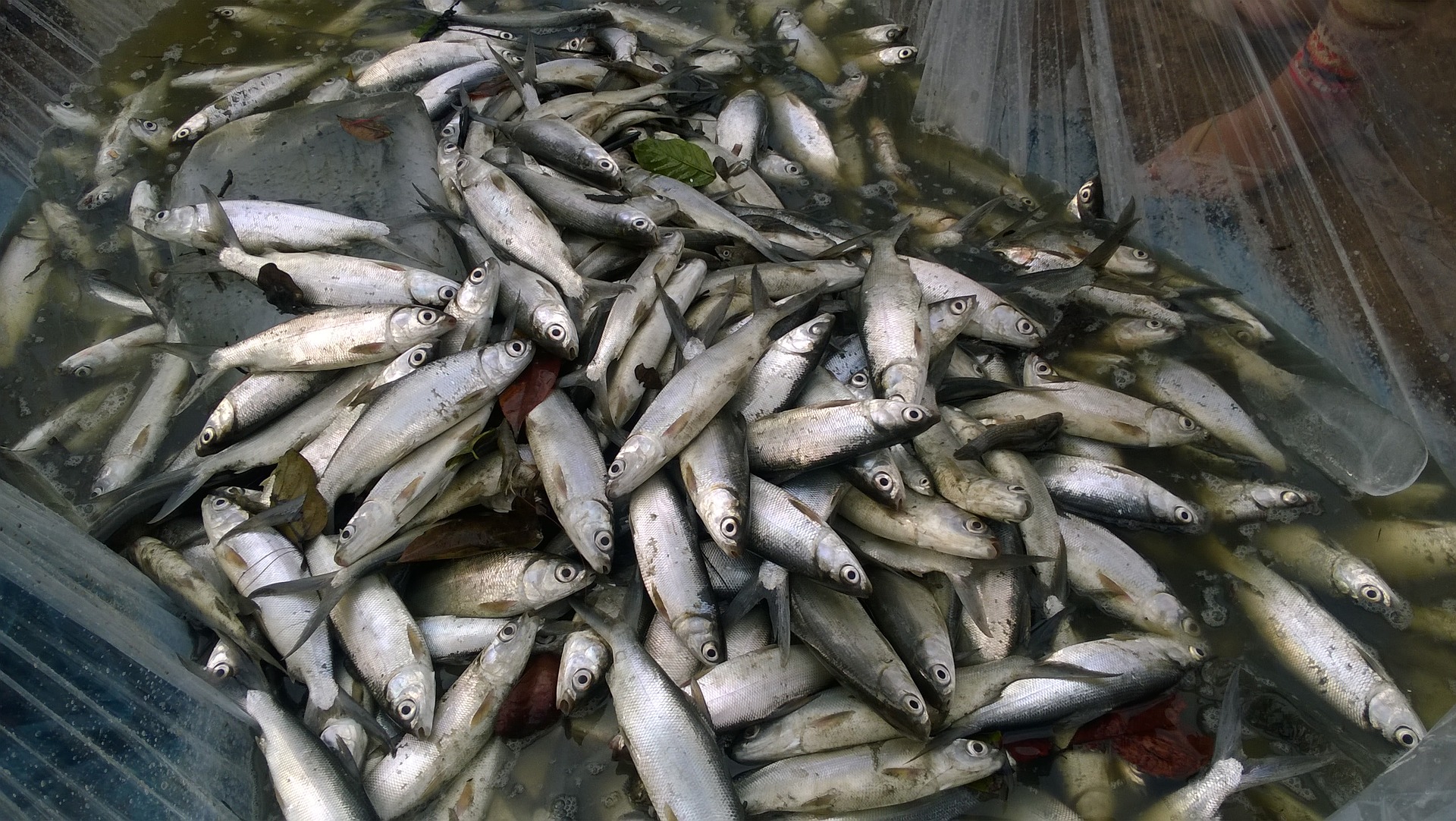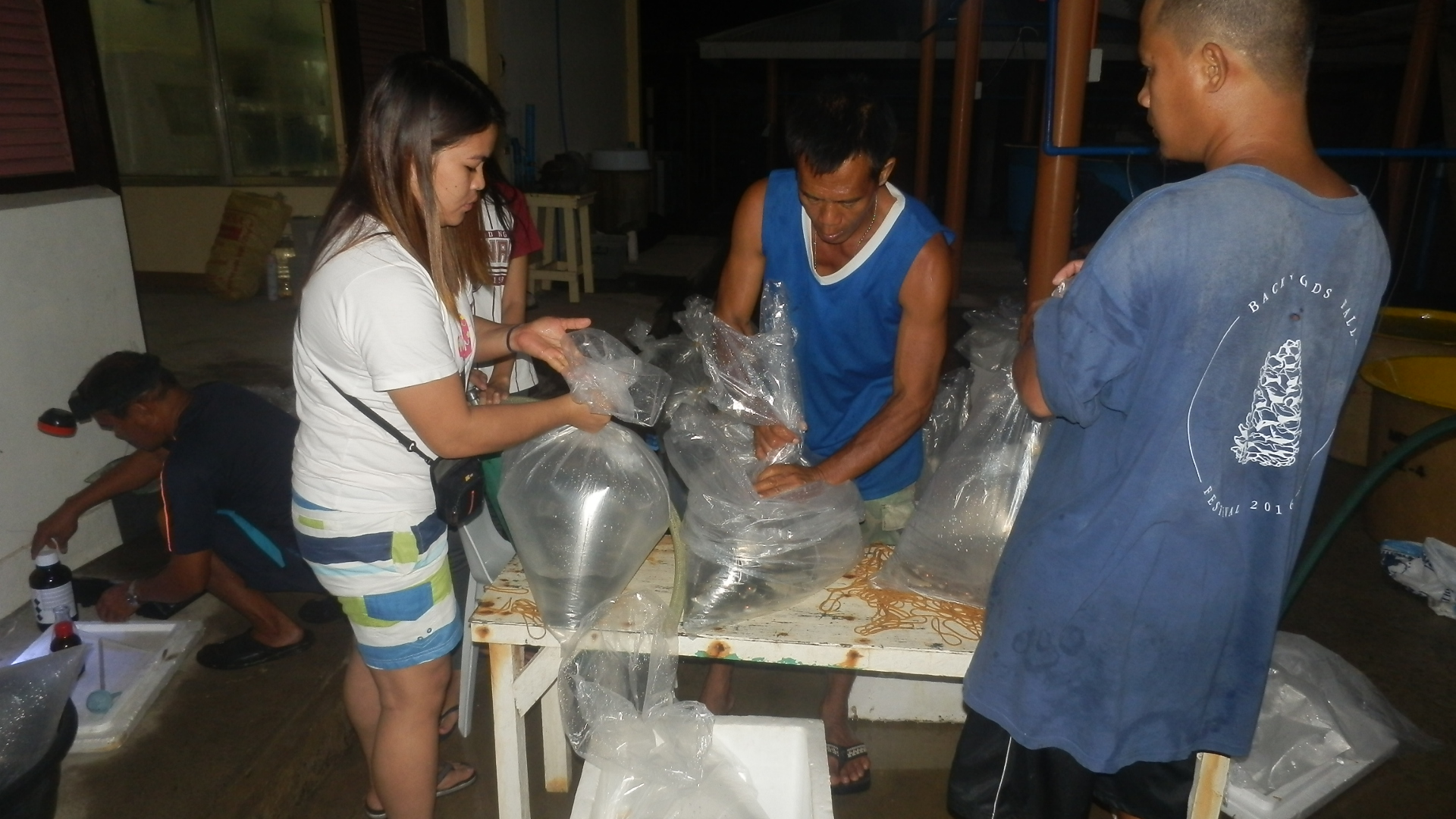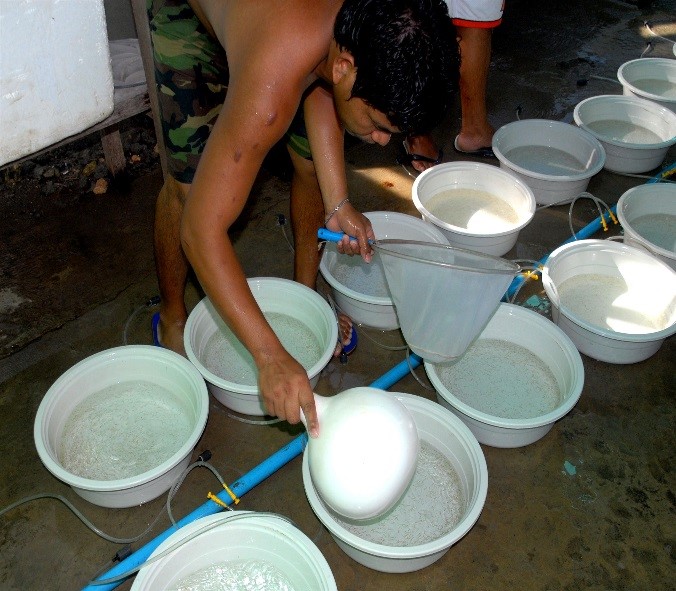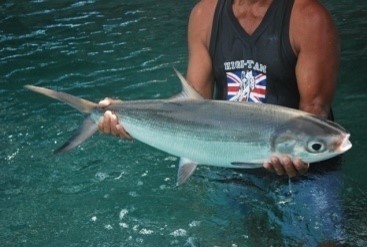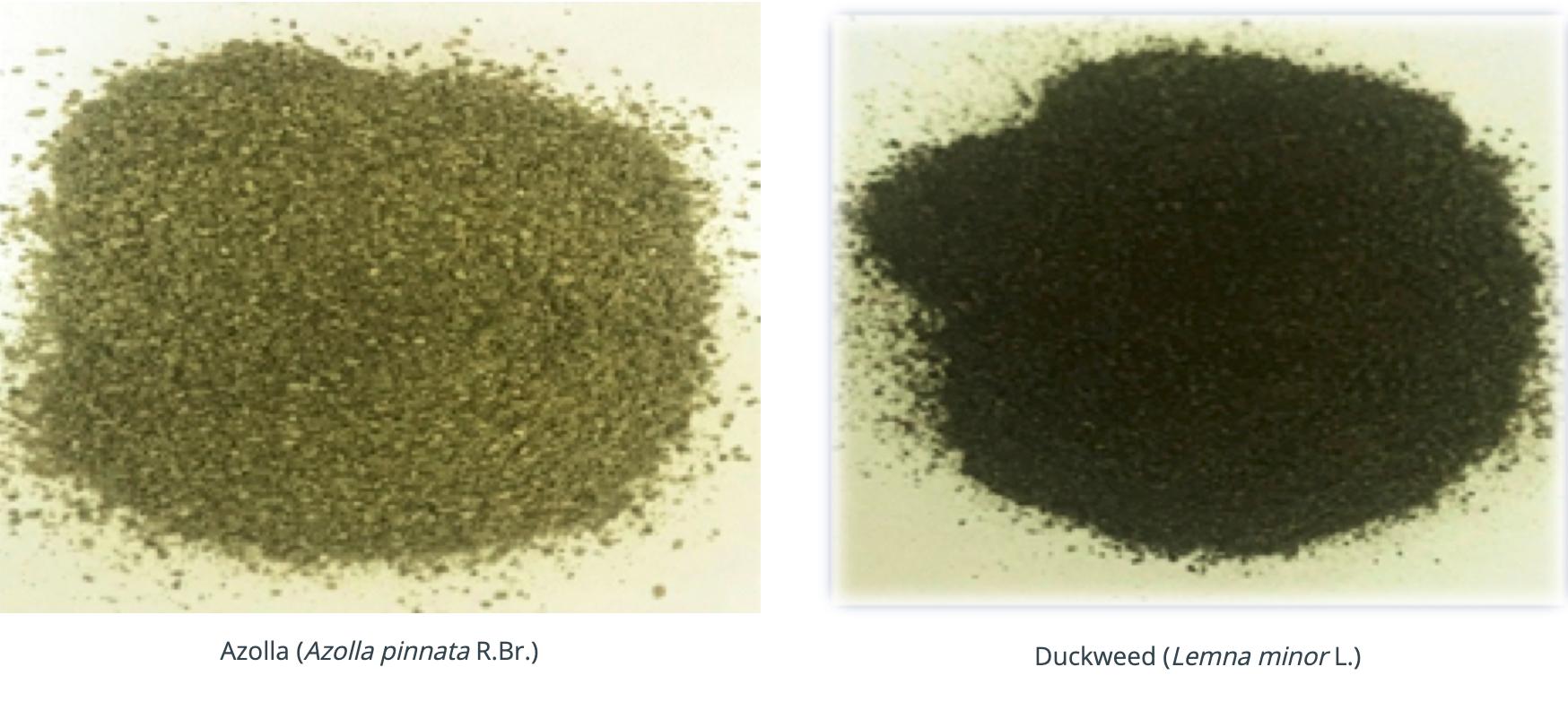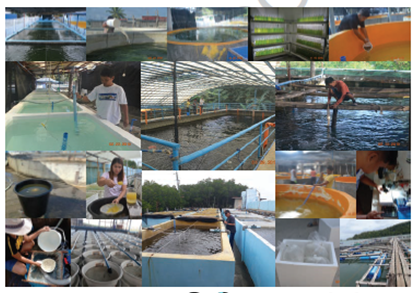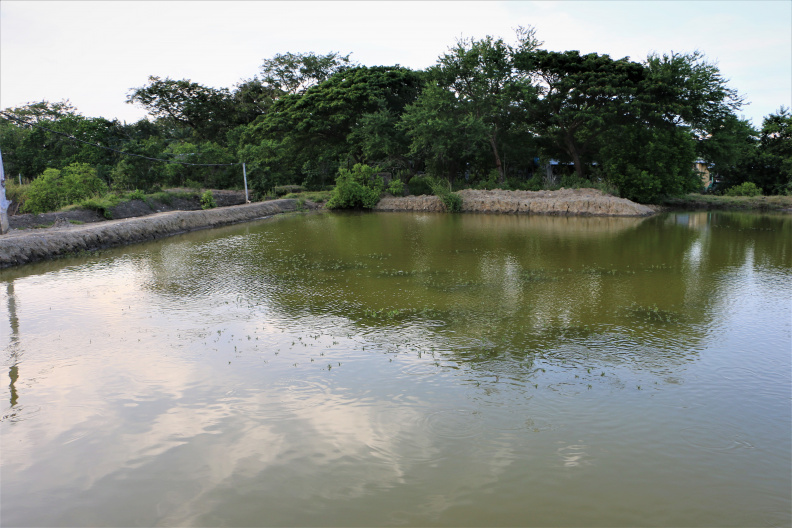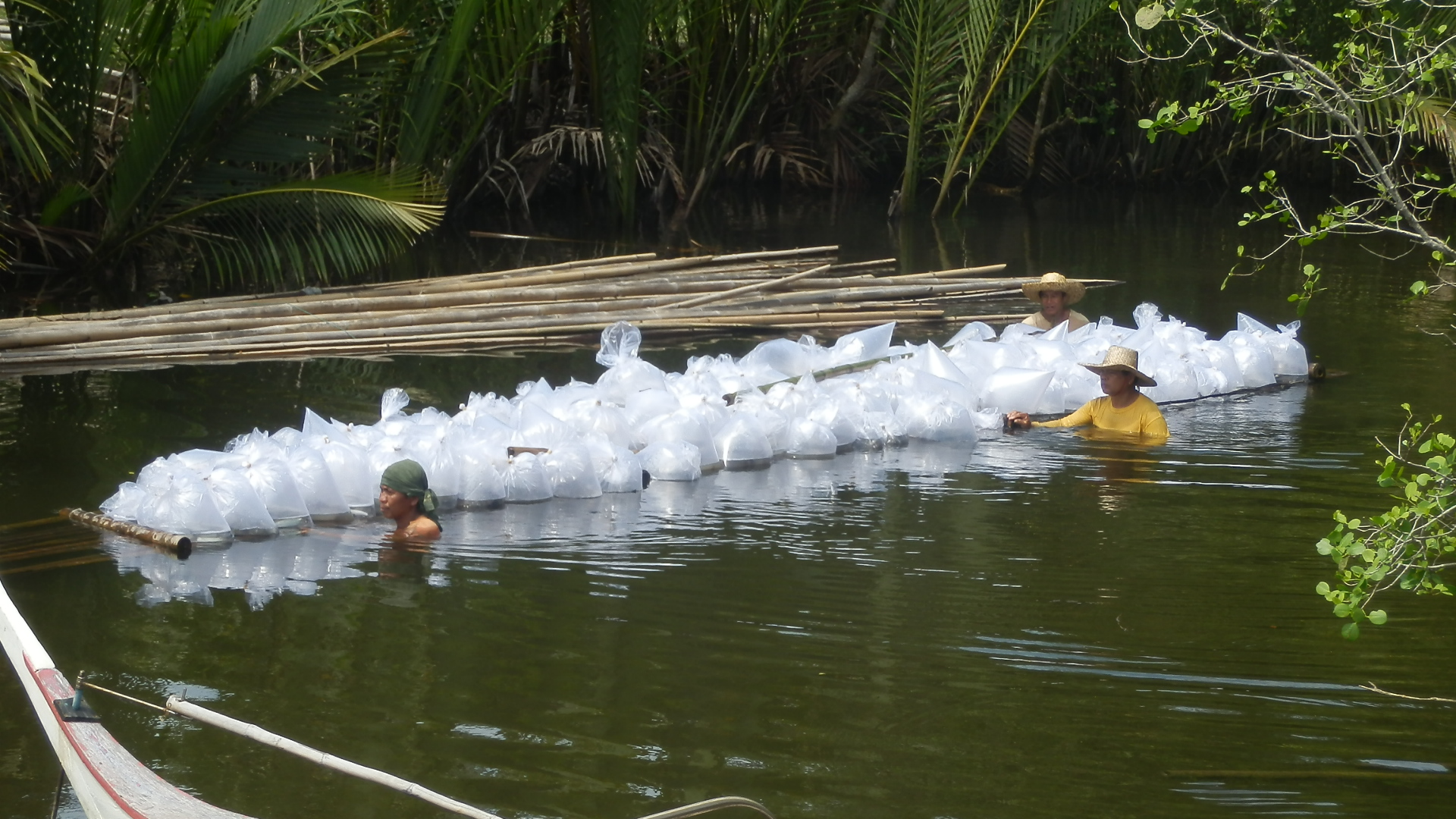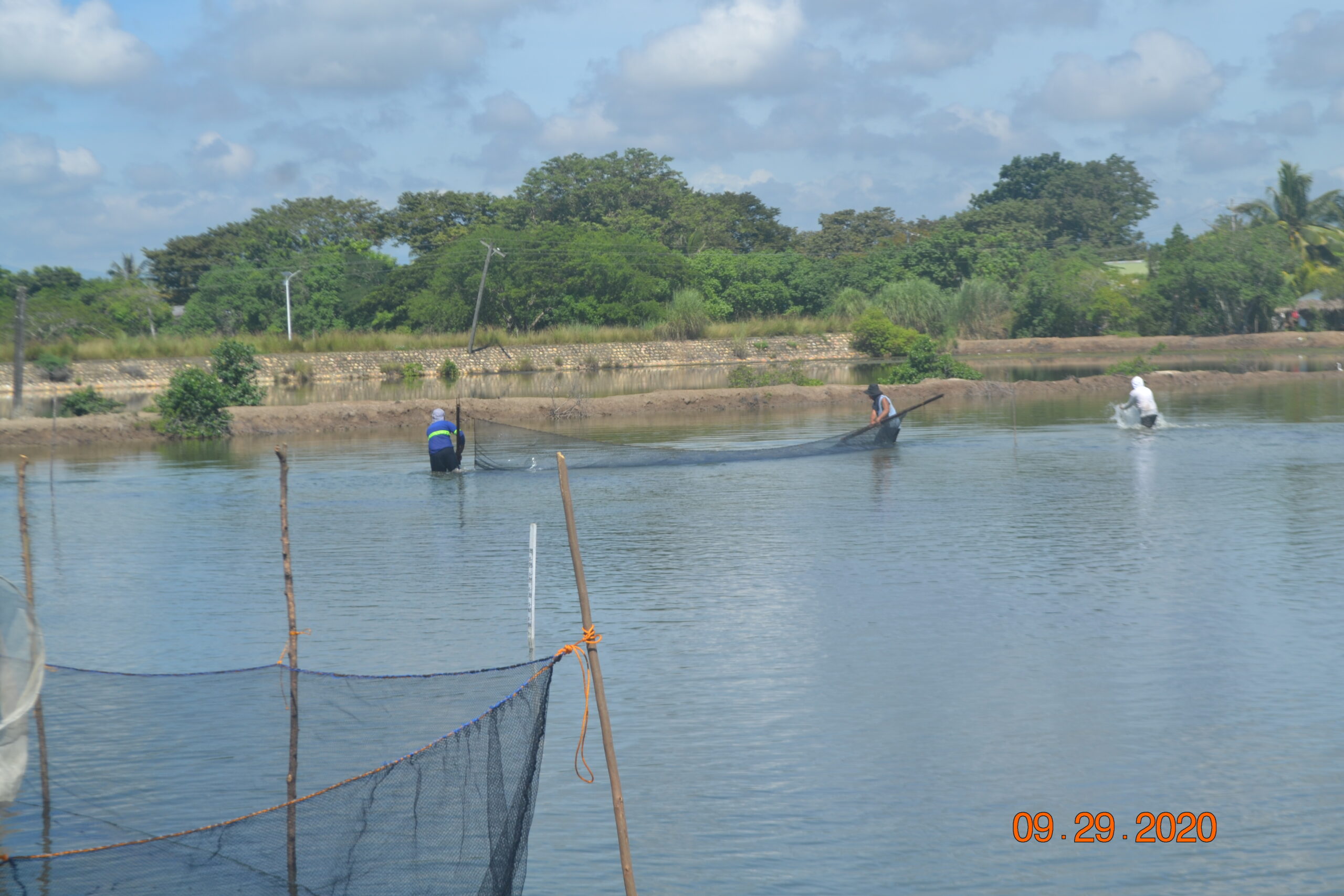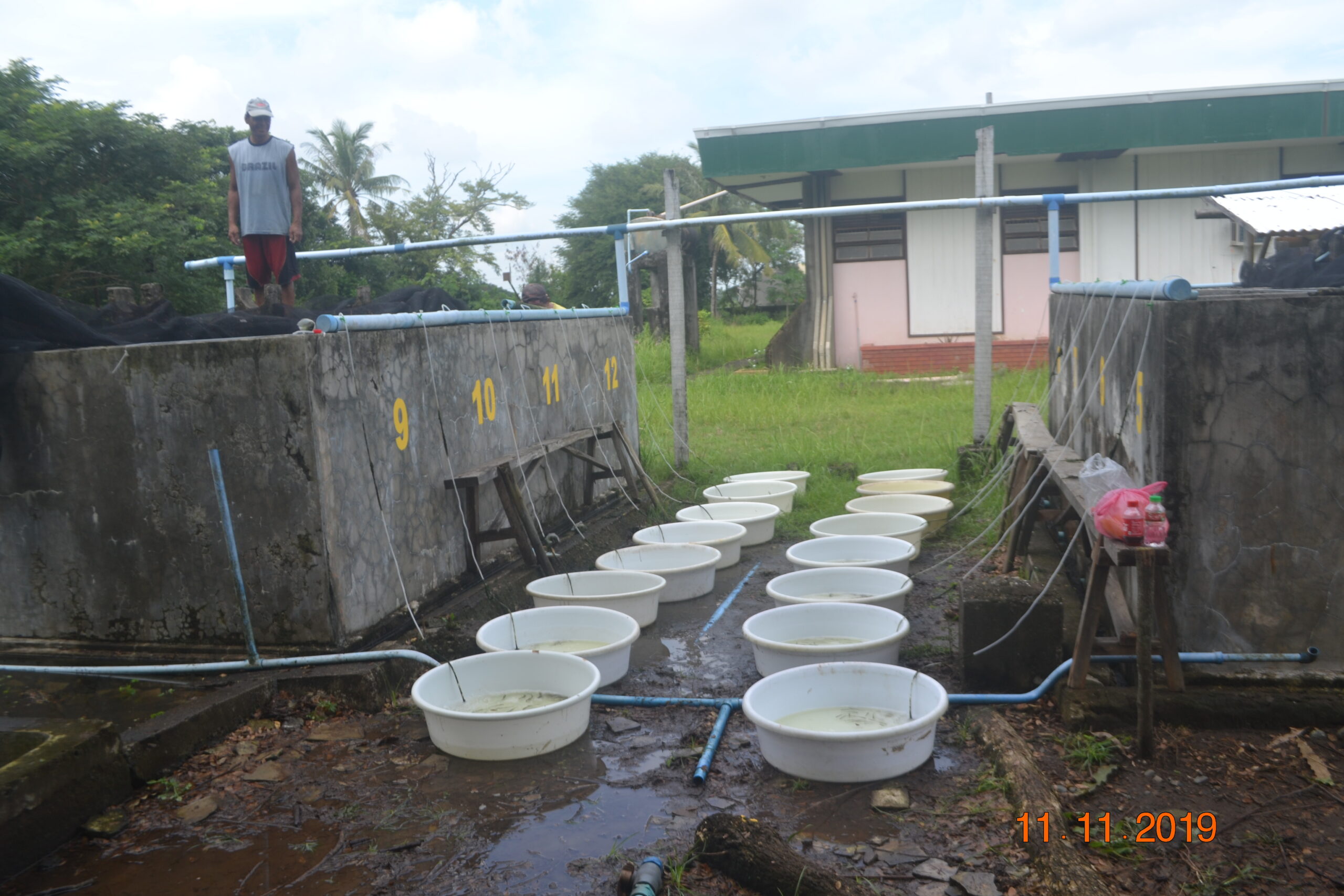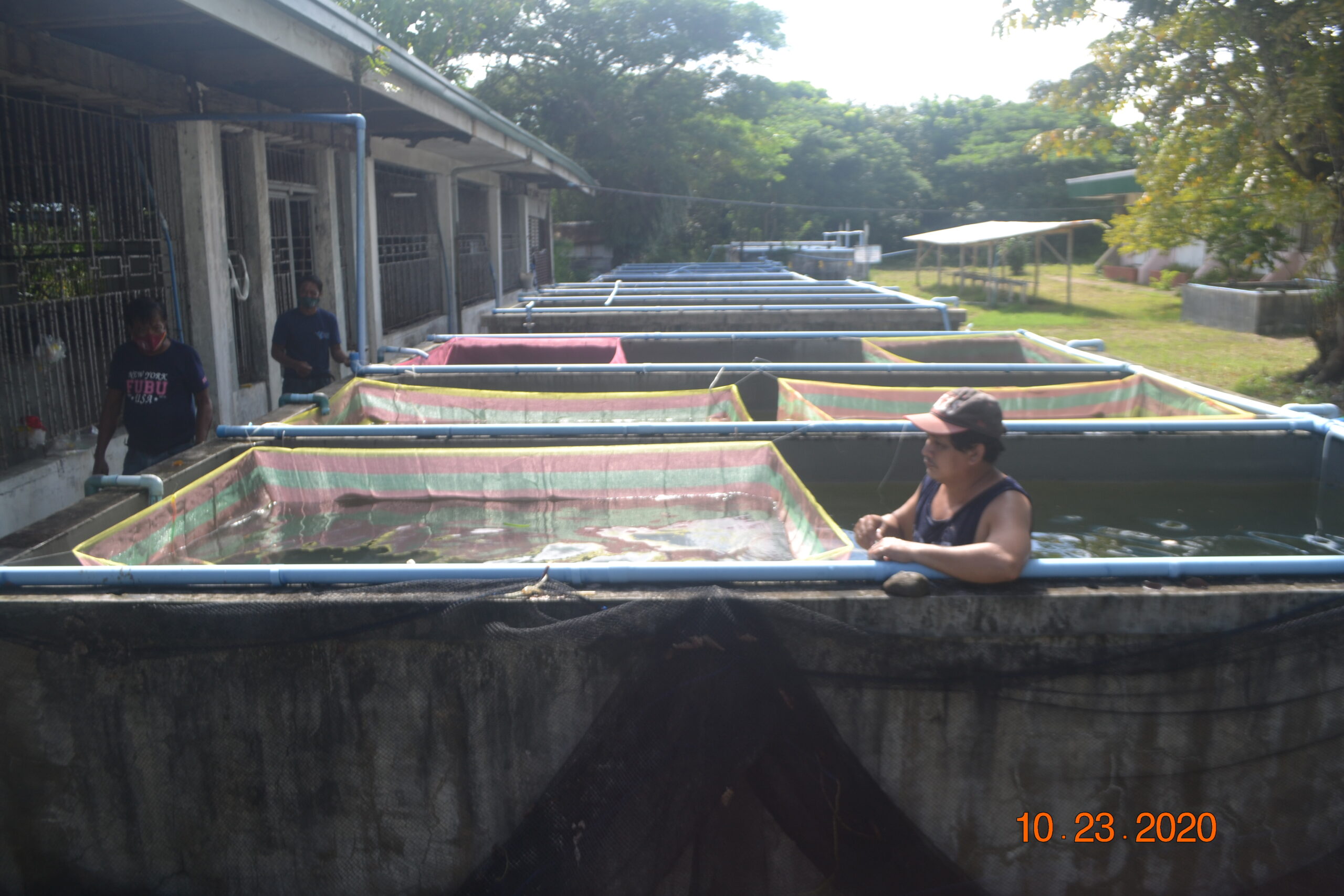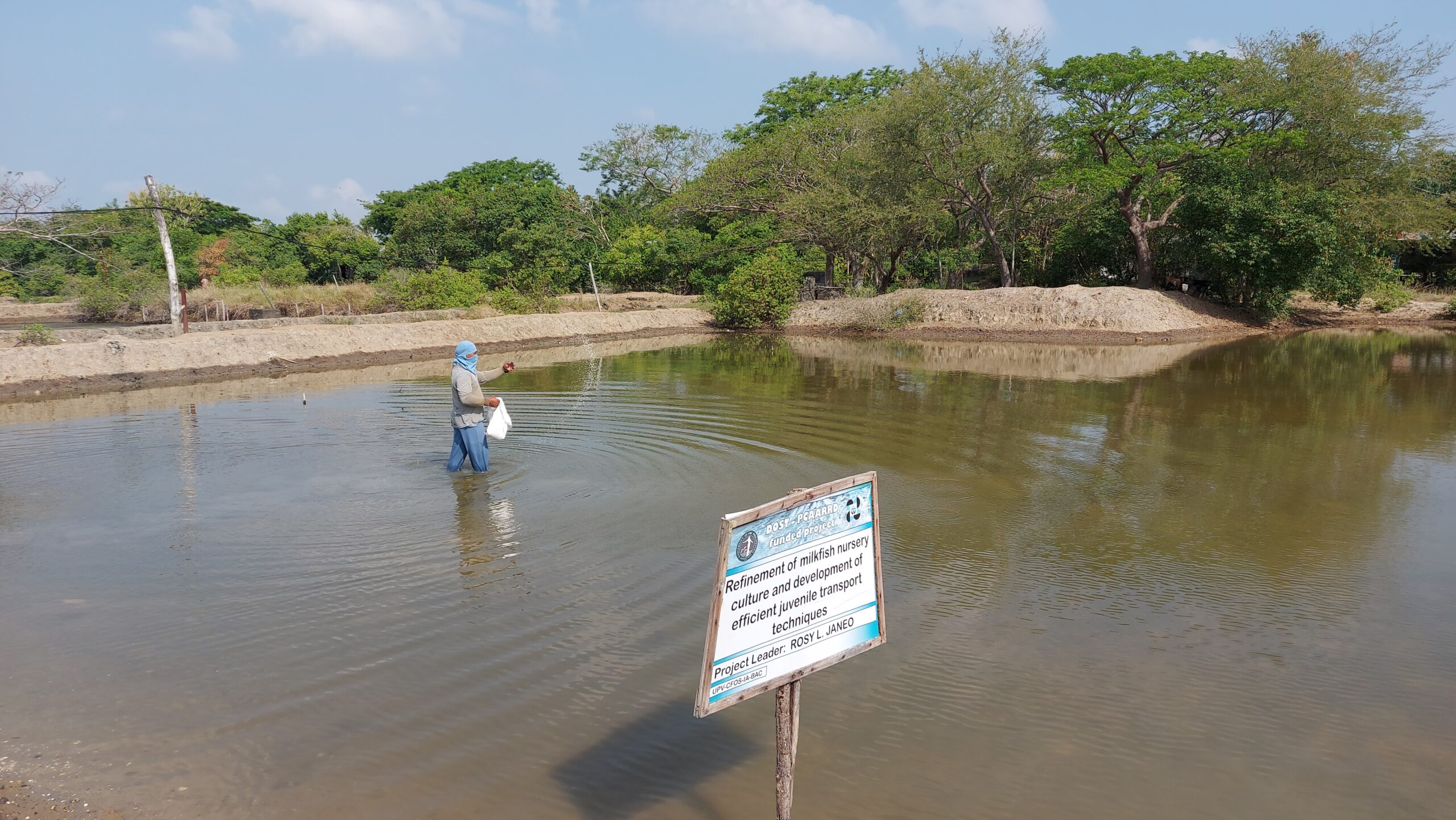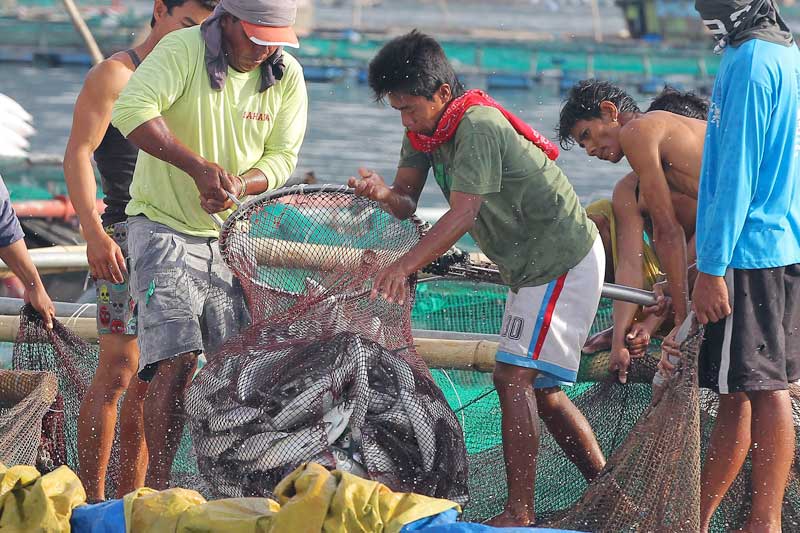Milkfish
Industry Strategic Science and Technology Program
Milkfish Industry Profile
Milkfish, which is locally known as “bangus” and scientifically named as Chanos chanos, is the Philippines’ national fish. Being one of the most popularly cultured fishes in the country, milkfish can be raised through brackish water, marine, and freshwater culture environments. According to the Food and Agriculture Organization (FAO) Statistics, the Philippines has been the lead producer of milkfish from 2001 to 2009, but was surpassed by Indonesia in 2010.
Majority of the milkfish production in the Philippines is for domestic consumption. Milkfish products are either sold frozen and/or fresh, and are commonly consumed dried, smoked, and/or filleted. Typically served in a Filipino household, the Philippine milkfish is a huge hit in countries, especially those populated by Filipino immigrants and workers.
Problems in the Industry
The main issue faced by the milkfish industry is the lack of hatchery tanks and low supply of high-quality fingerlings and feeds. Farmers’ lack of access to infrastructure and technologies (from hatchery to processing), poor market linkages, and high capital requirements are also observed to be the factors that limit the growth of the milkfish industry.
In comparison to the world’s leading milkfish producer, hatcheries in Indonesia have a higher survival rate (30% to 80%) compared to the Philippines (50%). They also have cheaper breeder’s fry (0.30 PhP/pc in the Philippines vs 0.13 PhP/pc in Indonesia) and feed. This explains why the majority of production costs in the Philippines are attributed to feeds and stocking material, making the country highly dependent on imported fry from Indonesia.
In Thailand, fish ponds were found to have more depth, therefore having more fry and fingerlings per unit area compared to fish ponds in our country. Local fisherfolks also complain about the quality of feeds in our country (i.e high feed conversion ratio), as well as the environment in the fish ponds (i.e. low dissolved oxygen). In fact, due to the deteriorating water quality that led to millions worth of fish kills in 2018 and 2019, a fishing moratorium was imposed in several municipalities of Pangasinan to rehabilitate the areas. Several studies from UP MSI and BFAR reported that the source of fry heavily influences the growth performance and survival rate of the fish fry, hence hatcheries must be placed near farms. Lastly, despite the interest and capability to export milkfish fry, companies in the Philippines expressed their concerns over the exclusion of fish fry in the list of commodities allowed for export.
Data Source: Philippine Statistics Authority update as of May 30, 2024.
Data Source: Philippine Statistics Authority update as of May 30, 2024.
Data Source: Philippine Statistics Authority update as of May 30, 2024.
Data Source: Philippine Statistics Authority update as of May 30, 2024.
Milkfish Policies
| Policy Type | Policy Number | Policy Year | Congress | Policy Title | Policy Description | Policy Objective | Policy Link | Commodity | Classification | info_encoder_stamp | info_date_stamp | info_quashing_remarks | filepath |
|---|---|---|---|---|---|---|---|---|---|---|---|---|---|
| Bill | House Bill No. 8681 | 2023 | 19th | An Act Establishing A Multi-Purpose Fishery Breeding Farm And Hatchery For The Production Of Crabs, Shrimps And Milkfish In The Munici[ality Of Balud, Province Of Masbate, And Appropriating Funds Therefor | According to the officials from the Bureau of Fisheries and Aquatic Resources (BF AR) in the Province of Masbate revealed that there are atleast 2,000 hectares in the coastal areas of Masbate that are desolate until now. The establishment of such breeding farm and hatchery will greatly improve the economic lives of the people not only in the above-mentioned area but also in the entire province of Masbate. It will also provide excellent employment opportunities to local fishermen and help alleviate poverty. In addition, the farm and hatchery will help replenish the supply of crabs, shrimps and milkfish there and will enable the people to keep pace with the increasing demand for these marine products, locally and even worldwide. | This bill seeks to establish a multi-purpose fishery breeding farm and hatchery for the production of crabs, shrimps and milkfish in the Municipality of Balud, Province of Masbate, to meet the nutritional and economic needs specifically of the residents of the coastal barangays of Balud. The people of these coastal town rely upon fishing as their source of food and livelihood. | https://docs.congress.hrep.online/legisdocs/basic_19/HB08681.pdf | Milkfish | Null | Jeff | 11/22/2024 | C:\Users\trist\Documents\Formatting\Output\Milkfish_2024-11-22_processed.xlsx | |
| Bill | House Bill No. 8680 | 2023 | 19th | An Act Establishing A Multi-Purpose Fishery Breeding Farm And Hatchery For The Production Of Crabs, Shrimps And Milkfish In The Munici[ality Of Mandaon, Province Of Masbate, And Appropriating Funds Therefor | Officials from the Bureau of Fisheries and Aquatic Resources (BF AR) in the Province of Masbate revealed that there are atleast 2,000 hectares in the coastal areas of Masbate that are desolate until now. The establishment of such breeding farm and hatchery will greatly improve the economic competitiveness and lives of the people not only in the above-mentioned area but also in the entire province of Masbate. It will also provide excellent employment opportunities to local fishermen and help alleviate poverty. In addition, the farm and hatchery will help replenish the supply of crabs, shrimps and milkfish there and will enable the people to keep pace with the increasing demand for these marine products, locally and even worldwide. | This bill seeks to establish a multi-purpose fishery breeding farm and hatchery for the production of crabs, shrimps and milkfish in the Municipality of Mandaon, Province of Masbate, to meet the nutritional and economic needs specifically of the residents of the coastal barangays of Mandaon. The people of these coastal town rely upon fishing as their source of food and livelihood. | https://docs.congress.hrep.online/legisdocs/basic_19/HB08680.pdf | Milkfish | Null | Jeff | 11/22/2024 | C:\Users\trist\Documents\Formatting\Output\Milkfish_2024-11-22_processed.xlsx | |
| Bill | House Bill No. 10309 | 2021 | 18th | An Act Establishing A Technology Verification Station With Bangus, Tilapia And Freshwater Prawn Hatcheries In The Coastal Municipality Of Hagonoy, Province Of Bulacan, And Appropriating Funds Therefor | According to the statistics provided by Bureau of Fisheries and Aquatic Resources III, Bulacan contributed 15% or 6,222.16MT of the Aquaculture sector share to the total provincial fisheries production of 41,418.05MT. Major Aquaculture Species in the Province of Bulacan are bangus, tilapia, sugpo, mudcrab, catfish, oyster and mussel. Of the total aquaculture production, bangus is the top contributor followed by tilapia and sugpo. This industry is established and is already contributing to the province’s economy. If we can develop and harness the potential economic contribution and impact of this natural resources, it can jumpstart the abrupt halt in the Philippine’s economic growth brought by the pandemic. | This bill aims to establish a technology verification station with major aquaculture species hatcheries in the coastal Municipality of Hagonoy, Province of Bulacan. This measure will boost the already flourishing industry of fisheries production and will provide employment and business opportunities this pandemic. | https://docs.congress.hrep.online/legisdocs/basic_18/HB10309.pdf | Milkfish | Null | Jeff | 11/22/2024 | C:\Users\trist\Documents\Formatting\Output\Milkfish_2024-11-22_processed.xlsx | |
| Bill | House Bill No. 10310 | 2021 | 18th | An Act Establishing A Technology Verification Station With Bangus, Tilapia And Freshwater Prawn Hatcheries In The Coastal Municipality Of Obando, Province Of Bulacan, And Appropriating Funds Therefor | According to the statistics provided by Bureau of Fisheries and Aquatic Resources III, Bulacan contributed 15% or 6,222.16MT of the Aquaculture sector share to the total provincial fisheries production of 41,418.05MT. Major Aquaculture Species in the Province of Bulacan are bangus, tilapia, sugpo, mudcrab, catfish, oyster and mussel. Of the total aquaculture production, bangus is the top contributor followed by tilapia and sugpo. This industry is established and is already contributing to the province’s economy. If we can develop and harness the potential economic contribution and impact of this natural resources, it can jumpstart the abrupt halt in the Philippine’s economic growth brought by the pandemic. | This aims to establish a technology verification station with major aquaculture species hatcheries in the coastal Municipality of Obando, Province of Bulacan. This measure will boost the already flourishing industry of fisheries production and will provide employment and business opportunities this pandemic. | https://docs.congress.hrep.online/legisdocs/basic_18/HB10310.pdf | Milkfish | Null | Jeff | 11/22/2024 | C:\Users\trist\Documents\Formatting\Output\Milkfish_2024-11-22_processed.xlsx | |
| Bill | House Bill No. 10311 | 2021 | 18th | An Act Establishing A Technology Verification Station With Bangus, Tilapia And Freshwater Prawn Hatcheries In The Coastal Municipality Of Paombong, Province Of Bulacan, And Appropriating Funds Therefor | According to the statistics provided by Bureau of Fisheries and Aquatic Resources III, Bulacan contributed 15% or 6,222.16MT of the Aquaculture sector share to the total provincial fisheries production of 41,418.05MT. Major Aquaculture Species in the Province of Bulacan are bangus, tilapia, sugpo, mudcrab, catfish, oyster and mussel. Of the total aquaculture production, bangus is the top contributor followed by tilapia and sugpo. This industry is established and is already contributing to the province’s economy. If we can develop and harness the potential economic contribution and impact of this natural resources, it can jumpstart the abrupt halt in the Philippine’s economic growth brought by the pandemic. | This bill aims to establish a technology verification station with major aquaculture species hatcheries in the coastal Municipality of Paombong, Province of Bulacan. This measure will boost the already flourishing industry of fisheries production and will provide employment and business opportunities this pandemic. | https://docs.congress.hrep.online/legisdocs/basic_18/HB10311.pdf | Milkfish | Null | Jeff | 11/22/2024 | C:\Users\trist\Documents\Formatting\Output\Milkfish_2024-11-22_processed.xlsx | |
| Bill | House Bill No. 10312 | 2021 | 18th | An Act Establishing A Technology Verification Station With Bangus, Tilapia And Freshwater Prawn Hatcheries In The Coastal Municipality Of Bulakan, Province Of Bulacan, And Appropriating Funds Therefor | According to the statistics provided by Bureau of Fisheries and Aquatic Resources III, Bulacan contributed 15% or 6,222.16MT of the Aquaculture sector share to the total provincial fisheries production of 41,418.05MT. Major Aquaculture Species in the Province of Bulacan are bangus, tilapia, sugpo, mudcrab, catfish, oyster and mussel. Of the total aquaculture production, bangus is the top contributor followed by tilapia and sugpo. This industry is established and is already contributing to the province’s economy. If we can develop and harness the potential economic contribution and impact of this natural resources, it can jumpstart the abrupt halt in the Philippine’s economic growth brought by the pandemic. | This bill aims to establish a technology verification station with major aquaculture species hatcheries in the coastal Municipality of Bulakan, Province of Bulacan. This measure will boost the already flourishing industry of fisheries production and will provide employment and business opportunities this pandemic. | https://docs.congress.hrep.online/legisdocs/basic_18/HB10312.pdf | Milkfish | Null | Jeff | 11/22/2024 | C:\Users\trist\Documents\Formatting\Output\Milkfish_2024-11-22_processed.xlsx | |
| Bill | House Bill No. 10313 | 2021 | 18th | An Act Establishing A Technology Verification Station With Bangus, Tilapia And Freshwater Prawn Hatcheries In The Coastal Municipality Of Calumpit, Province Of Bulacan, And Appropriating Funds Therefor | According to the statistics provided by Bureau of Fisheries and Aquatic Resources III, Bulacan contributed 15% or 6,222.16MT of the Aquaculture sector share to the total provincial fisheries production of 41,418.05MT. Major Aquaculture Species in the Province of Bulacan are bangus, tilapia, sugpo, mudcrab, catfish, oyster and mussel. Of the total aquaculture production, bangus is the top contributor followed by tilapia and sugpo. This industry is established and is already contributing to the province’s economy. If we can develop and harness the potential economic contribution and impact of this natural resources, it can jumpstart the abrupt halt in the Philippine’s economic growth brought by the pandemic. | This bill aims to establish a technology verification station with major aquaculture species hatcheries in the coastal Municipality of Calumpit, Province of Bulacan. This measure will boost the already flourishing industry of fisheries production and will provide employment and business opportunities this pandemic. | https://docs.congress.hrep.online/legisdocs/basic_18/HB10313.pdf | Milkfish | Null | Jeff | 11/22/2024 | C:\Users\trist\Documents\Formatting\Output\Milkfish_2024-11-22_processed.xlsx | |
| Bill | House Bill No. 10314 | 2021 | 18th | An Act Establishing A Technology Verification Station With Bangus, Tilapia And Freshwater Prawn Hatcheries In The Coastal Municipality Of Malolos, Province Of Bulacan, And Appropriating Funds Therefor | According to the statistics provided by Bureau of Fisheries and Aquatic Resources III, Bulacan contributed 15% or 6,222.16MT of the Aquaculture sector share to the total provincial fisheries production of 41,418.05MT. Major Aquaculture Species in the Province of Bulacan are bangus, tilapia, sugpo, mudcrab, catfish, oyster and mussel. Of the total aquaculture production, bangus is the top contributor followed by tilapia and sugpo. This industry is established and is already contributing to the province’s economy. If we can develop and harness the potential economic contribution and impact of this natural resources, it can jumpstart the abrupt halt in the Philippine’s economic growth brought by the pandemic. | This bill aims to establish a technology verification station with major aquaculture species hatcheries in the coastal City of Malolos, Province of Bulacan. This measure will boost the already flourishing industry of fisheries production and will provide employment and business opportunities this pandemic. | https://docs.congress.hrep.online/legisdocs/basic_18/HB10314.pdf | Milkfish | Null | Jeff | 11/22/2024 | C:\Users\trist\Documents\Formatting\Output\Milkfish_2024-11-22_processed.xlsx | |
| Bill | House Bill No. 5530 | 2019 | 18th | An Act Establishing A Multi-Purpose Fishery Breeding Farm And Hatchery For The Production Of Milkfish (Bangus) In The Municipality Of Carmen And In The Island Garden City Of Samal (Igacos), Province Of Davao Del Norte, And Appropriating Funds Therefor | There shall be established, under the supervision of the Bureau of Fisheries and Aquatic Resources (BFAR) of the Department of Agriculture (DA), a multi-purpose fishery breeding farm and hatchery for the production of milkfish (bangus) in the Municipality of Carmen and in the Island Garden City of Samal (IGACOS), Province of Davao Del Norte. | This bill seeks to establish a multi-purpose fishery breeding farm and hatchery for the production of milkfish (bangus) in the Municipality of Carmen and in the Island Garden City of Samal (IGACOS), Province of Davao Del Norte, to address the growing nutritional and economic needs, and ensure long-term food security of the people of Davao del Norte. | http://www.congress.gov.ph/legisdocs/basic_18/HB05530.pdf | Milkfish | Null | Jeff | 11/22/2024 | C:\Users\trist\Documents\Formatting\Output\Milkfish_2024-11-22_processed.xlsx | |
| Resolution | Laguna Lake Development Authority (LDDA) Board Resolution No. 518 | 2017 | Null | Declaring a Moratorium on the Operation of Aquaculture Structures Within the Laguna de Bay | There is a one (1) year moratorium on the operation of all fishpens, fishcages and other aquaculture structures in Laguna de Bay; henceforth, no new stocking of fingerlings on existing structures shall be allowed effective immediately. The LLDA shall not issue any permits and clearances on any aquaculture activities in Laguna de Bay and shall direct all operators of existing fishpens/fishcages to harvest their fish stocks and demolish structures by MArch 31, 2017, otehrwise, the same shall be done by the LLDA. | This resolution imposes a 'zero fish pen' policy in Laguna de Bay to allow poor fishermen bigger access to the fishing ground covering waters of the provinces of Rizal and Laguna, and Metro Manila. | http://llda.gov.ph/wp-content/uploads/dox/br/fishpen/br518s2017.pdf | Milkfish | Null | Jeff | 11/22/2024 | C:\Users\trist\Documents\Formatting\Output\Milkfish_2024-11-22_processed.xlsx | |
| Resolution | Laguna Lake Development Authority (LDDA) Board Resolution No. 540 | 2016 | Null | A Resolution Revising the Laguna de Bay Fishery Zoning and Management Plan of 1999, Setting Sustainable and Equitable Allocation of Mechanisms, Declaring Certain Acts as Prohibited and For Other Purposes | The total area allowed for aquaculture structures is 9,200 hectares. Given this limation and guided by the President's pronouncement of prioritizing the underprivileged fishermen in its entitlements, the Authority hereby sets an allocation on a 60%:40% ratio for individual permittee and corporations/partnerships/cooperatives, respectively. | This resolution ensures the comprehensive and systematic development of the Laguna de Bay through ecologically balanced methods that will rationalize the utilization of the lake and its resources. | http://llda.gov.ph/wp-content/uploads/dox/br/zomap/br540s2018.pdf | Milkfish | Null | Jeff | 11/22/2024 | C:\Users\trist\Documents\Formatting\Output\Milkfish_2024-11-22_processed.xlsx | |
| Guidelines/Strategies | Null | 2016 | Null | The Philippine National Standard (PNS) on the Code of Good Aquaculture Practices (GAqP) for Milkfish and Tilapia | This Code of Good Aquaculture Practices (GAqP)for milkfish and tilapia covers practices that aim to prevent or minimize the risk associated with aquaculture production in fresh, brackish and marine waters. This Code covers the following aspects of aquaculture production namely: a) food safety, b) animal health and welfare, c) environmental integrity, and d) socio-economic. This Code applies to aquaculture farms or projects, such as, but not limited to hatcheries, nurseries and grow-out intended for tilapia and milkfish culture. This contains practices adopted from ASEAN Code of Good Aquaculture Practices for Food Fish and Good Aquaculture Practice Farmers Guidance Workbook of BFAR developed under European Union (EU) Trade Related Technical Assistance (TRTA) Program. | The Philippine National Standard (PNS) on the Code of Good Aquaculture Practices (GAqP) for Milkfish and Tilapia intends to provide practices to prevent or reduce the risk of hazards occurring during aquaculture production, harvesting, postharvest handling of milkfish and tilapia and ensuring aquatic animal health and welfare. | http://www.bafs.da.gov.ph/2017-10-12-00-46-55/standard-formulation/philippine-national-standards?download=474:pns-bafs-196-2017-code-of-good-aquaculture-practices-for-milkfish-and-tilapia&start=160 | Milkfish | Null | Jeff | 11/22/2024 | C:\Users\trist\Documents\Formatting\Output\Milkfish_2024-11-22_processed.xlsx | |
| Bill | House Bill No. 5789 | 2015 | 16th | An Act Establishing A Multi-Species Hatchery Under The Bureau Of Fisheries And Aquatic Resources For The Breeding And Production Of Bangus, Mudcrabs, Mussels, Oysters, Prawns And Similar Species In The Municipality Of Sultan Naga Dimaporo, Lanao Del Norte, To Be Known As The Lanao Del Norte Multi-Species Hatchery And Marine Science Center And Appropriating Funds Therefore | There shall be established, under the supervision of the Bureau of Fisheries and Aquatic Resources of the Department of Agriculture, a multi-species hatchery for the breeding and production of bangus, mudcrabs, mussels, oysters, prawns and similar species in the Municipality of Sultan Naga Dimaporo, Lanao del Norte to be known as the Lanao del Norte Multi-Species Hatchery and Marine Science Center. The Lanao del Norte Multi-Species Hatchery and Marine Science Center shall conduct continuing research and experimentation of bangus, mudcrabs, mussels, oysters, prawns and similar species, as they apply to local conditions, to discover new methods and technology adaptive to prevailing weather conditions that will rejuvenate the aquaculture industry. There shall be established a Local Advisory Council that shall provide policy direction for the Center and facilitate the exchange of information between the Center and the stakeholders. The Council shall be composed of the BFAR Director for Region X as Chairman, the BFAR Director for Region IX and the Provincial Governors of Lanao del Norte, Misamis Occidental and Zamboanga del Sur as Co-Chairmen, and the Presidents of the Municipal Mayor's League of the said three provinces and three representatives from the local fisheries sector — one from each province to be appointed by the respective Governors, as members. | This bill seeks to establish a multi-species hatchery in the municipality of Sultan Naga Dimpaoro, Province of Lanao del Norte to be known as the Lanao del Norte Multi-Species Hatchery and Marine Science Center marine science center. Its main objective is to breed and mass-produce fry and fingerlings for bangus, mudcrabs, mussels, oysters, prawns and marine species for dispersal in Panguil Bay, Iligan Bay, and Illana Bay. | http://www.congress.gov.ph/legisdocs/basic_16/HB05789.pdf | Milkfish | Null | Jeff | 11/22/2024 | C:\Users\trist\Documents\Formatting\Output\Milkfish_2024-11-22_processed.xlsx | |
| Guidelines/Strategies | Null | 2008 | Null | Philippine National Standards (PNS) for Frozen milkfish | This standard prescribes quality specifications and safety requirements and methods for determining these for frozen milkfish (Chanos chanos, Forskal) prepared in the following forms: • Whole • Deboned • Choice cuts | The PNS for Frozen milkfish aims to provide common understanding on the scope of the standard, product description, classifications, essential composition and quality factors, hygiene and handling, packaging and labeling requirements, methods of analyses and sampling, and definition of defectives. | http://spsissuances.da.gov.ph/attachments/article/847/PNS-BAFPS%2066-2008%20-%20Frozen%20Milkfish.pdf | Milkfish | Null | Jeff | 11/22/2024 | C:\Users\trist\Documents\Formatting\Output\Milkfish_2024-11-22_processed.xlsx | |
| Law | Presidential Decree No. 704 | 1975 | Null | Revising and Consolidating All Laws and Decrees Affecting Fishing and Fisheries, also known as the "Fisheries Decree of 1975" | The salient features of are: i. To accelerate and promote the integrated development of the fishery industry and keep the fishery resources in optimum productive condition through proper conservation and protection; ii. To promote the organization and assistance and help integrate activities of persons and entities of the industry so that the nation may achieve the maximum economic utilization of its fishery resources; iii. To encourage the exportation of fish so that the fishery industry may contribute positively to the development of the national economy; iv. The BFAR assumed jurisdiction and responsibility in the management, conservation, development, production, utilization and disposition of fishery and aquatic resources, except municipal waters under the municipal governments concerned; v. Amendment of composition of the Fishery Industry Development Council (FIDC); vi. Banned bangus fry exportation except those of other species, but only after satisfaction of local fishing industry needs; vii. Allowed person and entities to enter into charter contracts, lease or lease-purchase agreements with any foreign person or entity, or contracts for financial, technical or other forms of assistance regarding the various phases of the fishing industry; viii. That BFAR shall identify and set aside public lands to be subdivided into family-size fishponds to be leased in accordance with guidelines established by the FIDC; ix. Named certain banking and lending institutions to grant loans to eligible borrowers of the fishery industry; and x. Financing of municipal and/or small-scale fishing. | This decree aims to revise and consolidate all laws and decrees affecting fishing and fisheries to make them even more responsive to the needs of the fishery industry. | https://www.officialgazette.gov.ph/1975/05/16/presidential-decree-no-704-s-1975/ | Milkfish | Null | Jeff | 11/22/2024 | C:\Users\trist\Documents\Formatting\Output\Milkfish_2024-11-22_processed.xlsx | |
| Law | Republic Act No. 3586 | 1963 | 5th | An Act Prohibiting the Exportation of Bangus Fry | It shall be unlawful for any person, association or corporation to export bangus fry to any foreign country from the date of the approval of this Act. Any violation of this Act shall be punished by a fine of not less than one thousand pesos nor more than five thousand pesos or by an imprisonment for not less than one year nor more than five years, or both, at the discretion of the court. In case the violation is committed by an association or corporation, imprisonment when imposed shall be served by the manager thereof and or any other person responsible for said violation. | This Act prohibits the exportation of Bangus Fry. | Null | Milkfish | Null | Jeff | 11/22/2024 | C:\Users\trist\Documents\Formatting\Output\Milkfish_2024-11-22_processed.xlsx | |
| Law | Commonwealth Act No. 297 | 1938 | Null | An Act To Amend Section Seventy Of Act Numbered Four Thousand Three, Known As The Fisheries Act” As Amended By Commonwealth Act Numbered One Hundred Fifteen | Section 70. License tax upon taking of fish in municipal waters. A municipal council which has not granted the exclusive privilege of erecting fish corrals or operating fishponds in municipal waters or taking or catching “bangus” known as “kawag-kawag”, may impose a license tax upon the privilege of taking fish in such waters with nets, traps, or other fishing tackle, upon persons qualified according to section sixty-seven hereof, except those already licensed | This Act aims to amend section 70 of Act No. 4003, known as the "Fisheries Act" regarding the license tax upon taking of fish in municipal waters. | Null | Milkfish | Null | Jeff | 11/22/2024 | C:\Users\trist\Documents\Formatting\Output\Milkfish_2024-11-22_processed.xlsx | |
| Law | Commonwealth Act No. 115 | 1936 | Null | An Act to Amend Sections Sixty-Seven, Sixty-Nine and Seventy of Act Numbered Four Thousand Three, Otherwise Known as the Fisheries Act | Sec. 67. Grant of fishery.— A municipal council shall have authority, for purposes of profit, to grant the exclusive privilege of erecting fish corrals, or operating fishponds, or taking or catching ‘bangus’ known as ‘kawag-kawag,’ within any definite portion, or area, of the municipal waters, as defined in article two of this Act, to any citizen of the Philippines or any association or corporation of which at least sixty-one per centum of the capital stock or of any interest in said capital stock belongs wholly to citizens of the Philippines and which is organized and constituted under the laws of the Philippines Sec. 69. Restriction upon letting of fishery to private party.— When the privilege to erect fish corrals, or operate fishponds, or take or catch ‘bangus’ fry, known as ‘kawag-kawag,’ is granted to a private party as herein above authorized, the same shall be let to the highest bidder for a period not exceeding five years, or, upon the previous approval of the provincial board, for a longer period not exceeding twenty years, under such conditions as shall be prescribed by the Secretary of Agriculture and Commerce Sec. 70. License tax upon taking of fish in municipal waters.— A municipal council shall grant the privilege of taking fish in its municipal waters with nets, traps, or other fishing tackle, with the exception of ‘bangus’ fry, known as ‘kawag-kawag,’ mentioned in sections sixty-seven and sixty-nine hereof, upon payment of a municipal license tax, to persons qualified according to section sixty-seven hereof, except those already licensed under article five of this Act | This Act aims to amend section 67, 69, and 70 of Act No. 4003, known as the "Fisheries Act". | Null | Milkfish | Null | Jeff | 11/22/2024 | C:\Users\trist\Documents\Formatting\Output\Milkfish_2024-11-22_processed.xlsx |
ISP for Milkfish
The PCAARRD Industry Strategic S&T Program (ISP) for milkfish aims to ensure a sustainable fry supply from local hatcheries and improve yields from various culture systems. Included under the ISP for milkfish are the activities that would refine and pilot test improved milkfish hatchery and grow-out protocols; and transfer the technology to the private sector.
Strategic R&D
Strategic R&D is DOST-PCAARRD’s banner program comprising all R&D activities that are intended to generate outputs geared towards maximum economic and social benefits
With the enormous opportunity in bangus fry requirement of the province and competitive advantage in terms of location, the ALT Hatchery and Aquaventures, in Panabo...
Aquaculture contributes significantly to the country's food supply, employment and national income. However, the continuous use of surface waters as sink for domestic and industrial...
The program will utilize genome-based approaches to generate and develop genomics-enabled resources, tools, and technologies designed to improve milkfish aquaculture production. The program will focus...
The Philippine milkfish industry had expanded from traditional extensive culture in brackishwater ponds to semi-intensive and intensive culture systems including off-shore pens and net cages....
Satellite Hatchery The program titled, "Genetics for Sustainable Milkfish Aquaculture" is composed of the following projects: Project 1: Development of molecular markers for milkfish broodstock...
Satellite Hatchery The program titled, "Improved Grow-out Technology for Sustainable Milkfish Industry Program" is composed of the following projects: Project 1: Improved culture management practices...
The program titled, "Enhancement of Milkfish Broodstock Management and Hatchery Practices for Production of Good Quality Fry" is composed of the following projects: Project 1:...
Technologies
Products, equipment, and protocols or process innovations developed to improve productivity, efficiency, quality, and profitability in the agriculture and aquatic industries, and to achieve sustainable utilization and management of natural resources
- Published On: May 19, 2021
The project aimed to address the current problems of the Philippine Milkfish Industry such as declining supply of stocks from the wild, high mortality rate,...
- Published On: May 19, 2021
Satellite Hatchery To address the shortage in milkfish fry for grow-out culture, aquaculture researchers adopted the milkfish hatchery core-satellite scheme adopted from milkfish hatchery operation...
- Published On: May 19, 2021
The automatic fry counter is a laser fry-counting tool that addresses the problem of rigorous and inaccurate manual counting of milkfish fry. The tool was...
Technology Transfer Initiatives
Technology Transfer initatives ensure that the outputs of R&D and innovations are transformed into viable and applicable technologies that help intended users.
In order for the Philippines to be self-sufficient in meeting the fry requirements of the milkfish industry, there is a need to maximize fry production...
The project aims to develop and set-up satellite hatcheries in selected pilot sites of the country. To date, the Philippines has a number of complete...
The project sustains and further strengthens the IP-TBM operations of the Pampanga State Agricultural University (PSAU) through the support of DOST-PCAARRD. It involves the following:...
To date, the Philippines has a number of milkfish hatcheries in Luzon, Visayas and Mindanao. However, fry supply is still not enough to supply the...
Capacity Building
Capacity building efforts of DOST-PCAARRD seek to develop and enhance the R&D capabilities of researchers and academic or research institutions through graduate assistantships, non-degree trainings & development, and/or upgrading of research facilities.
Infrastructure Development
Manpower Development
Policy Research & Advocacy
Analysis of policy concerns and advocacy of science-informed policies ensures that the AANR policy environment is conducive for S&T development and investments.
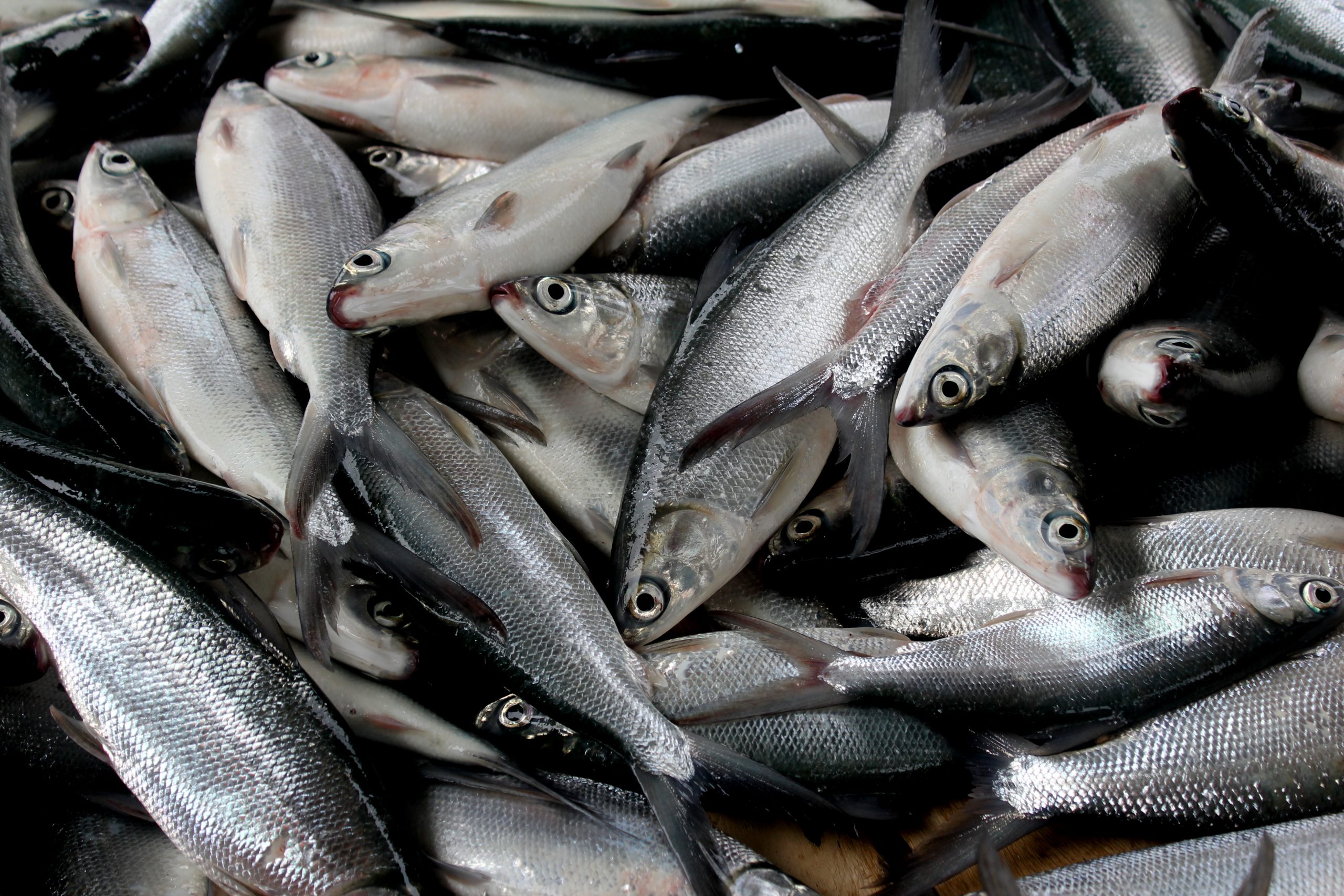
Competitiveness of Philippine Milkfish Industry under the ASEAN Economic Community
The study revealed that Philippine milkfish is competitive both under the export trade and import substitution scenarios. This implies that milkfish production is cheaper in the Philippines relative to other countries. For this reason, the country must fully develop and improve its local industry, and continuously expand its global market. With the country’s export competitiveness, the Philippines can compete with milkfish products from Thailand and Taiwan. To sustain the country’s import and export competitiveness, the average yield of 0.99 mt/ha (for ponds) must not decline by 67 percent or domestic cost must not grow by 253 percent.
Reference(s):
Manalo, N. Q. and Dorado, R. A. (2017). ASEAN Economic Community: Opportunities and Challenges for the Fishery Sector. Los Baños, Laguna, Philippines: Philippine Council for Agriculture, Aquatic and Natural Resources Research and Development – (Project Report)
Market Advisory
Market advisories provide a variety of information, including selection of market outlets, emerging demand, technological advances, and potential business partners, among others.
- Published On: July 3, 2024
Explore Philippine fisheries' evolving landscape, influenced by market shifts, aquaculture growth, sovereignty issues amid escalating tensions over the West Philippine Sea,, floating solar project, and...
- Published On: April 11, 2024
Discover recent developments in the Philippine fisheries sector, including a notable rise in fish catch and substantial infrastructure investments. Image Source: The Philippine Star Increase...



